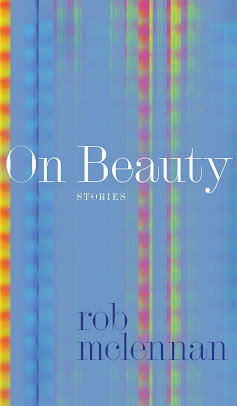“Every book is a quotation; and every house is a quotation out of all forests and mines and stone-quarries; and every man is a quotation from all his ancestors.” This is the epigraph to the Riverside edition of Emerson’s essay “Quotation and Originality.” (Susan Howe, The Midnight)
Saskatoon SK: I’ve been admiring poet Sylvia Legris' run over the past number of issues as editor of Saskatoon’s Grain magazine, crafting issues as full units, as opposed to the usual structure that literary journals seem to have. Recently, the summer 2010 issue, Vol. 37.4, “All over the place,” arrived, with highlights by Moez Surani, Chuqiao Yang, Jeramy Dodds, Audrea Lim and photography by featured artist Dianne Bos. There’s a unity to Legris’ issues that come out of careful attention to the writing, careful attention to what work is selected and how it is arranged, blending something between the usual option of “theme” or “non-themed” issues that so many others have simply continued out of, what, habit? Far too often, I’m either finding the idea of the “theme” issue rather tiresome (and somewhat arbitrary), or frustrated that every issue of any particular trade poetry and fiction journal feels almost exactly the same. Kudos to Legris for adding some freshness, thought and sheer attention to the process of literary journals, seamlessly blending poetry, fiction and non-fiction in a way that puts the writing itself first and foremost while creating each issue. How does such a thing become a rarity, I ask?
I am back from the Expo. I saw a woman club another woman in the lineup for the German pavilion. Her bra was sliding off. Two old men started to hit each other. The sweat on my body did not belong to me. I went home and drank four or five giant bottles of beer and sang a really bad rendition of a Chinese song. I think my relatives hate me. (Chuqiao Yang, “Beijing Notes”)
Strathroy ON: Had situations been different, I would have certainly submitted to the most recent issue of the critical journal Open Letter (Fourteenth Series, Number 4, Fall 2010), “George Bowering: Bridges to Elsewhere.” I think you already know why. Between my natural interest in Bowering’s writing, editing of a section on his work for Jacket, furthering the same into a soon-to-be-completed George Bowering: Essays on His Works for Guernica Editions. Constructed as a thesis, I’m wildly impressed at how guest-editor Ian Rae constructed his issue on the work of the Vancouver writer, editor and general troublemaker, George Bowering, very much created to explore his work other than the usual pieces on his Tish and post-Tish poetry-specific exploits, all without diminishing or dismissing that essential part of Bowering history. As he writes in his introduction:
The positive aspects of this post-Tish activity are that 1) as poets they continued to inspire each other to produce daring new works; 2) as colleagues they became each other’s most trusted editors and interpreters; 3) as critics they became experts in their fields and obtained prestigious positions as university professors or writers-in-residence; and 4) the importance of the Tish movement has been effectively enshrined in Canadian literary history. The negative aspects of this activity are that 1) the focus on Tish as a particular West Coast group, publication, and moment has diverted critical attention away from the projects of the individual poets once they had left Vancouver to pursue careers across the continent; 2) they journals to which the poets dedicated longer periods of their life – such as Bowering’s Imago (1964-1974), the subject of Shearer’s essay – are little studied; 3) the Tish poet-critics have now entered retirement and it is uncertain how the group fits into the research projects of younger scholars; and 4) while Jonathan Ball’s parody of Bowering’s A Short Sad Book (1977) in this issue highlights continuities between younger and older generations of experimental writers, new waves of Canadian poets, such as the Kootenay School of Writing, have seized upon the poet-critic model as a means of advancing their own distinct status in the book market. For such avant-garde writers, the first imperative is always to make a break with the literary past, even if this break exaggerates differences and conceals debts. For example, a recent issue of Open Letter demonstrates how hard KSW struggles to distance itself from its Tish predecessors.
The eleven pieces in the journal include works on Bowering’s long poem journal Imago by Karis Shearer, and pieces connecting Bowering to Al Purdy, Nicole Brossard, hockey, Bowering as historian, Earle Birney and the Okanagan itself, as well as a long-lost poem by Bowering on Birney. This might be the shortest and most expansive work on his considerably broad ouvre, and highlights, too, what other work there is that could be done. There could be a piece on Bowering’s reviewing and otherwise critical writing alone, for example. For anyone interested in the work of George Bowering, this is an essential text.




1 comment:
Thanks as a remedy for this nice article, it's absolutely conspicuous blogs
Post a Comment